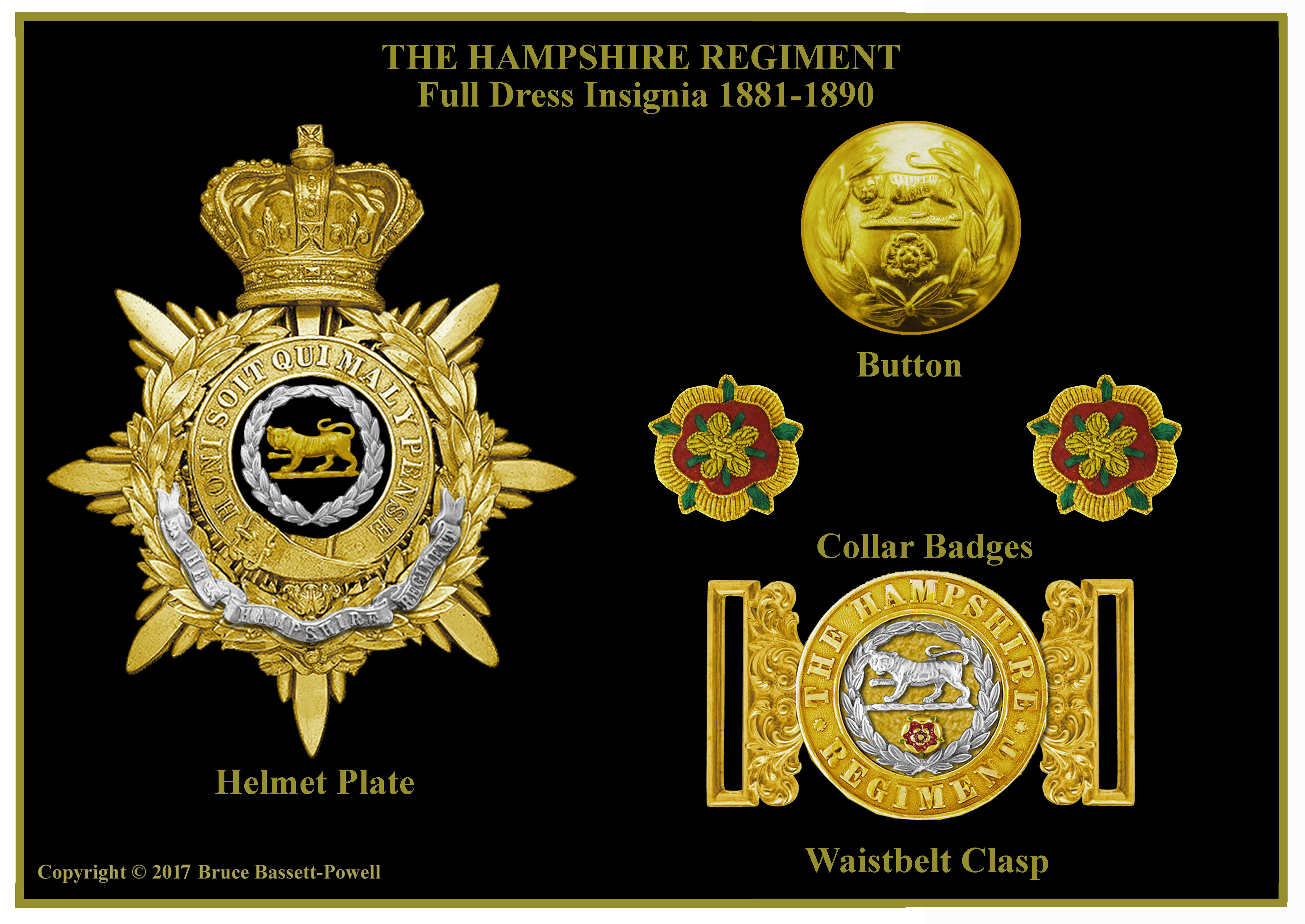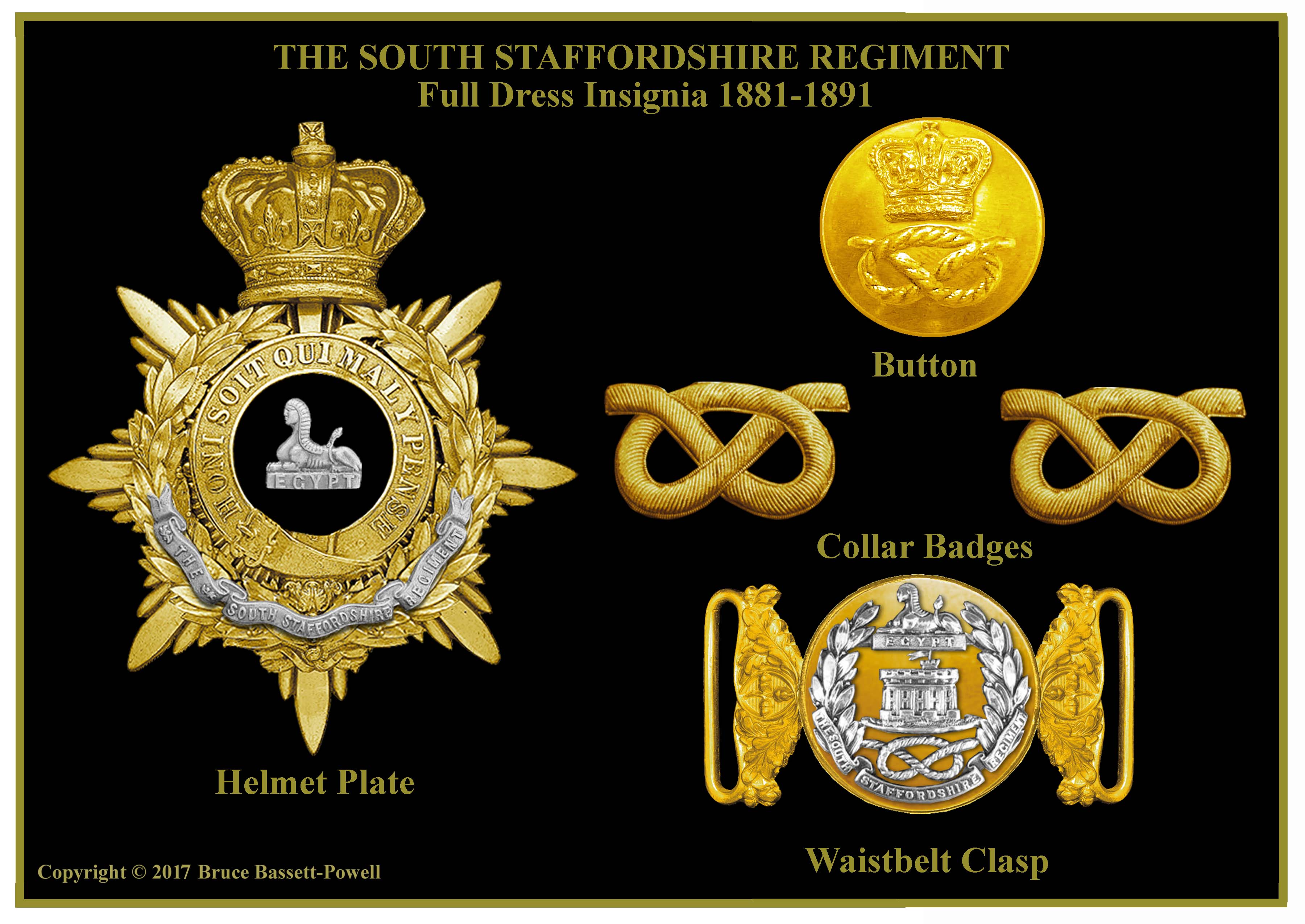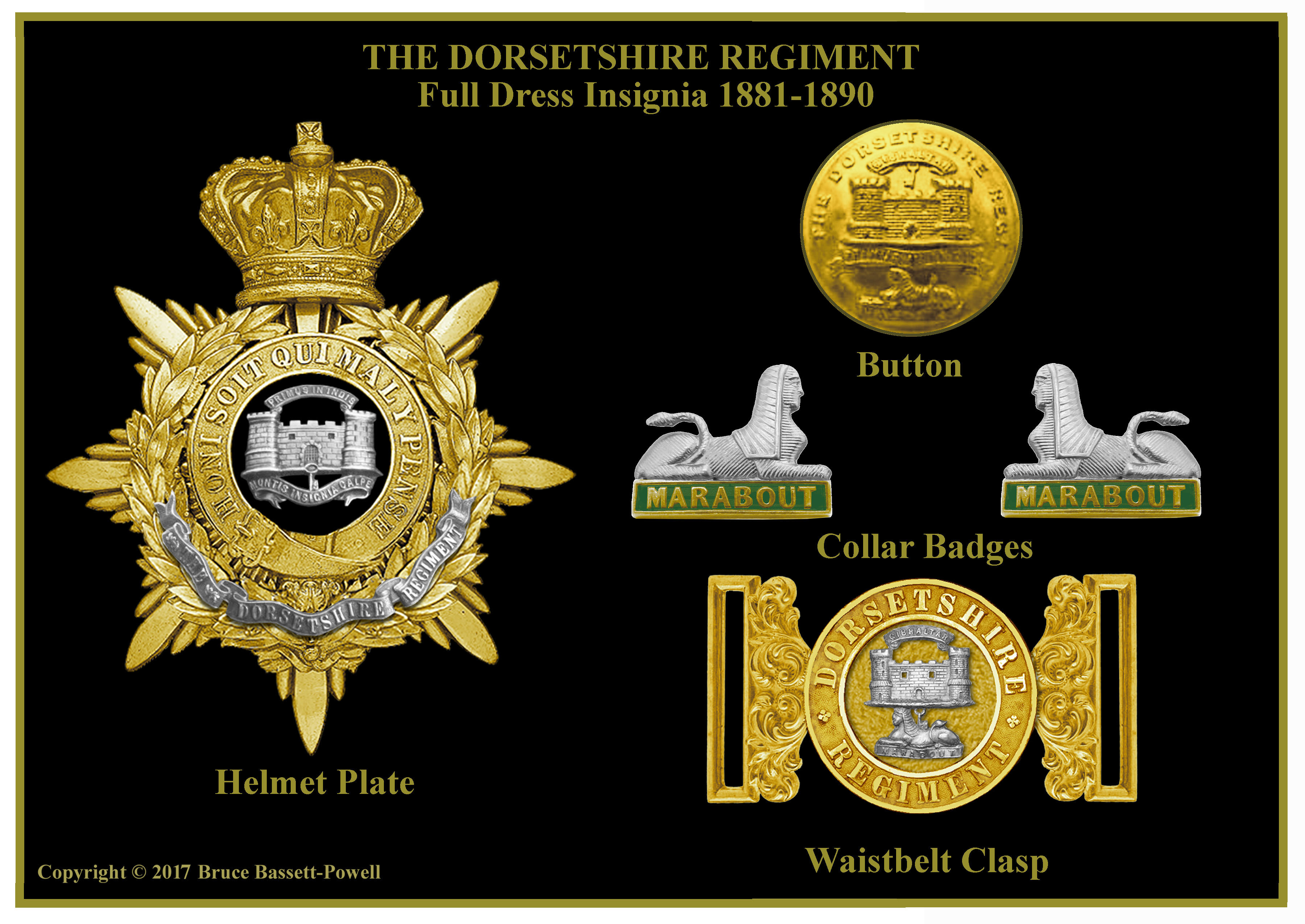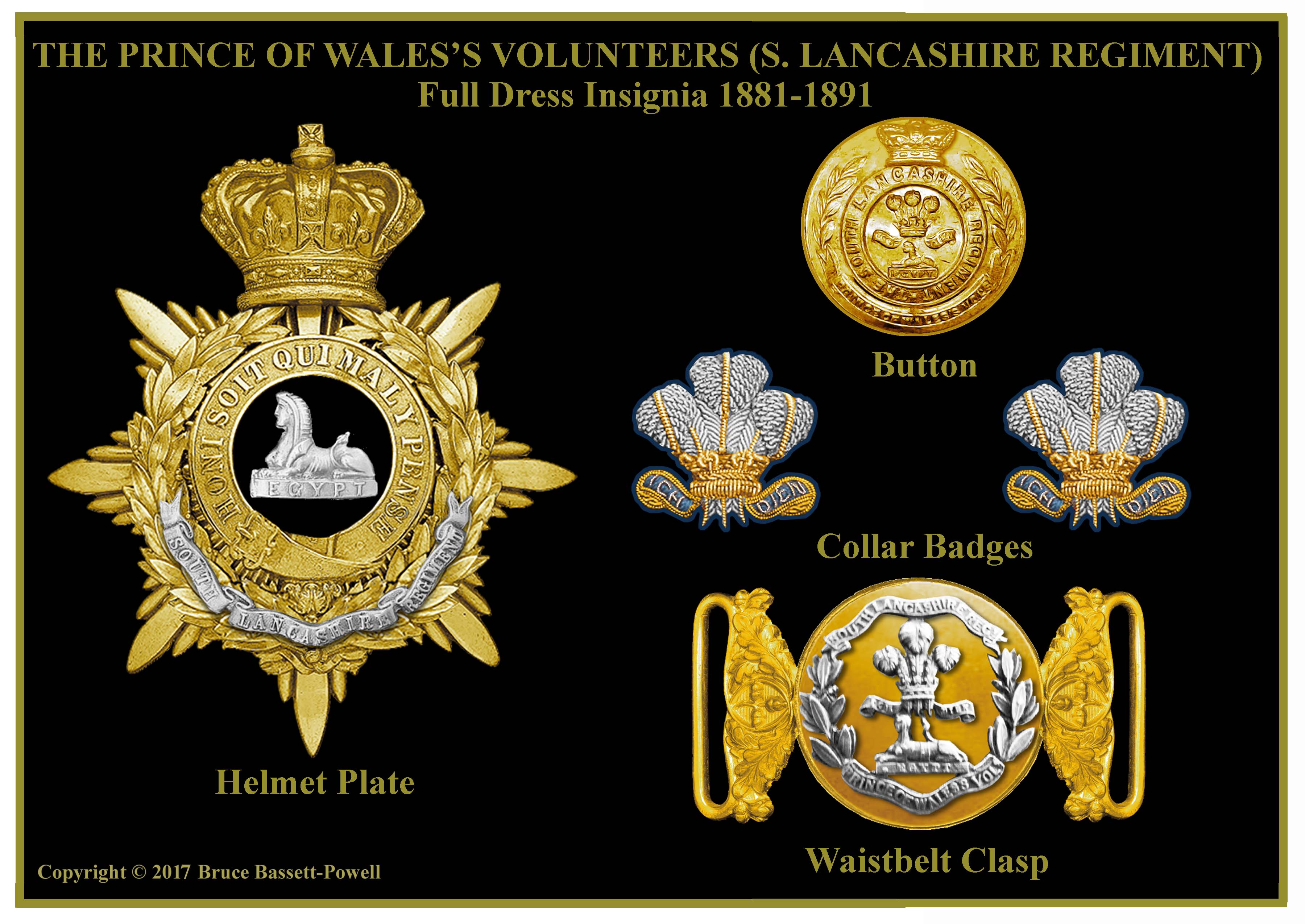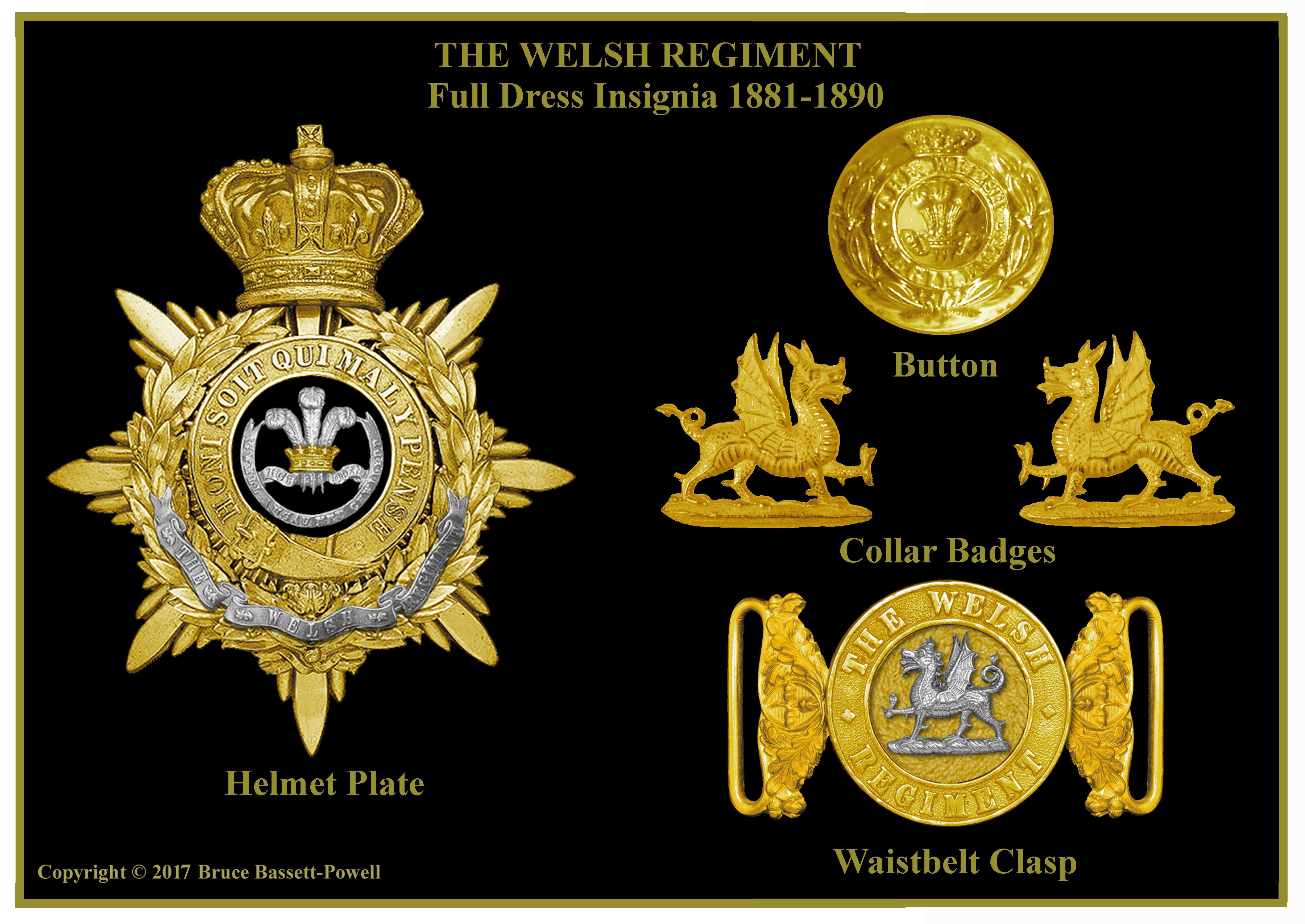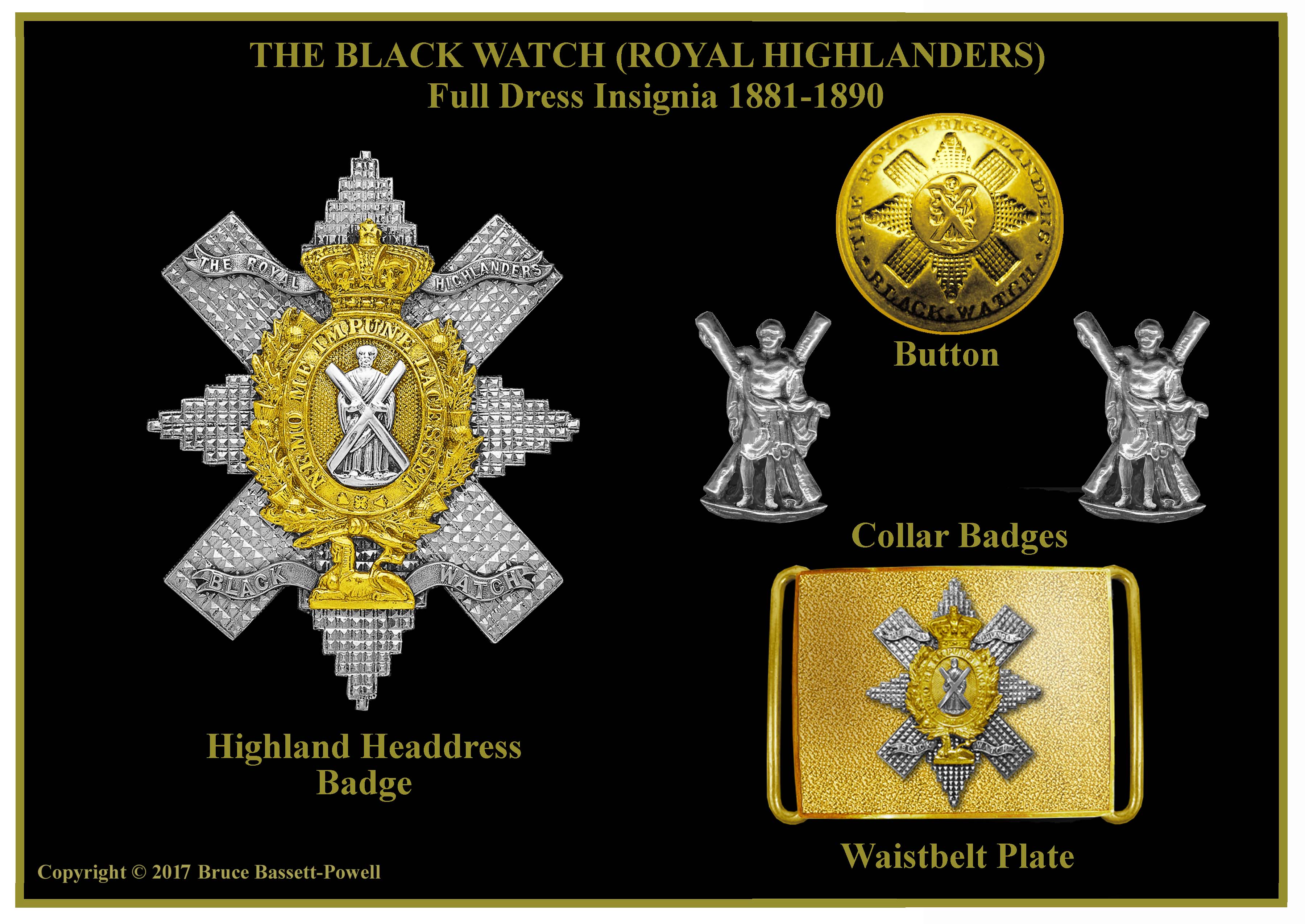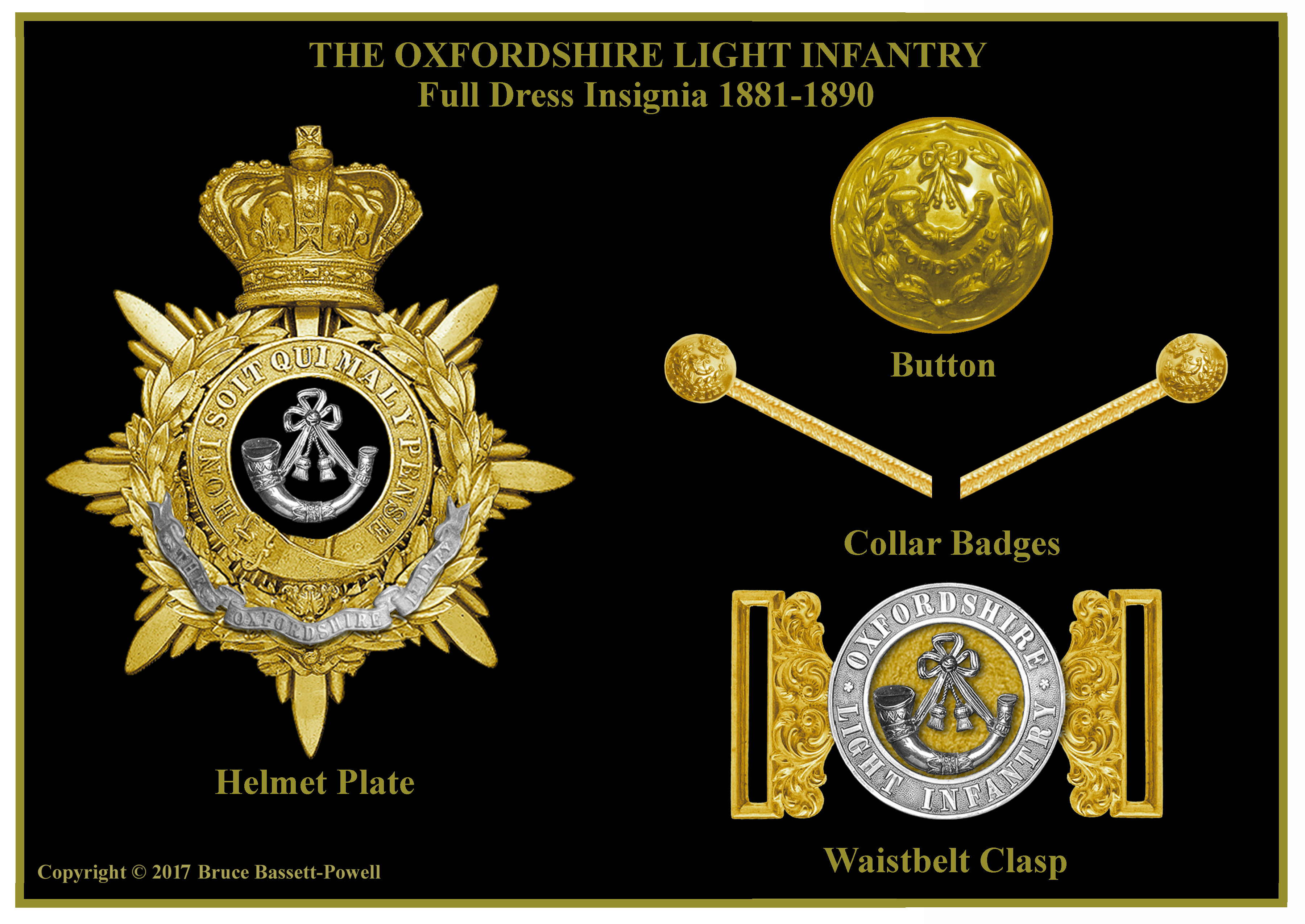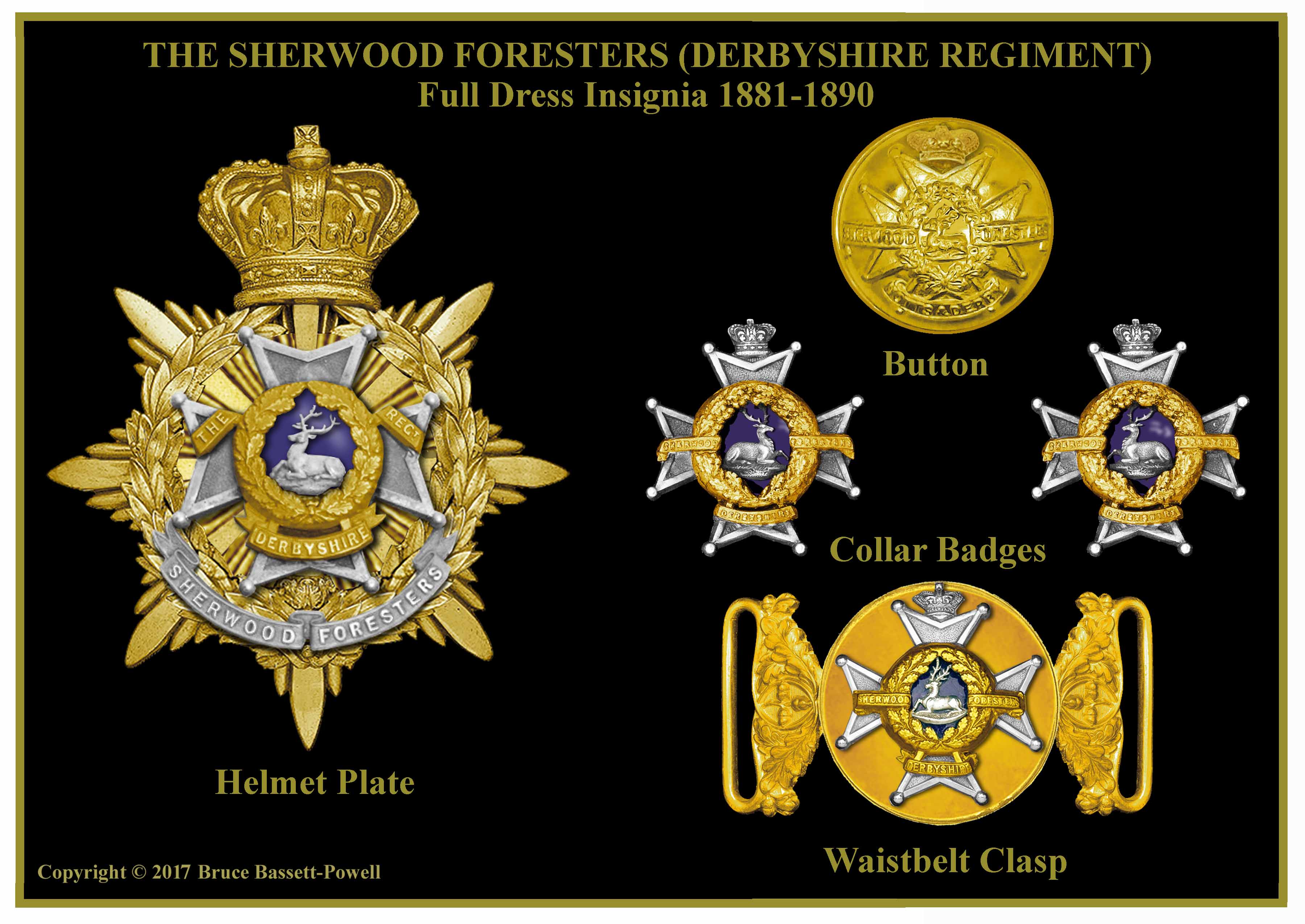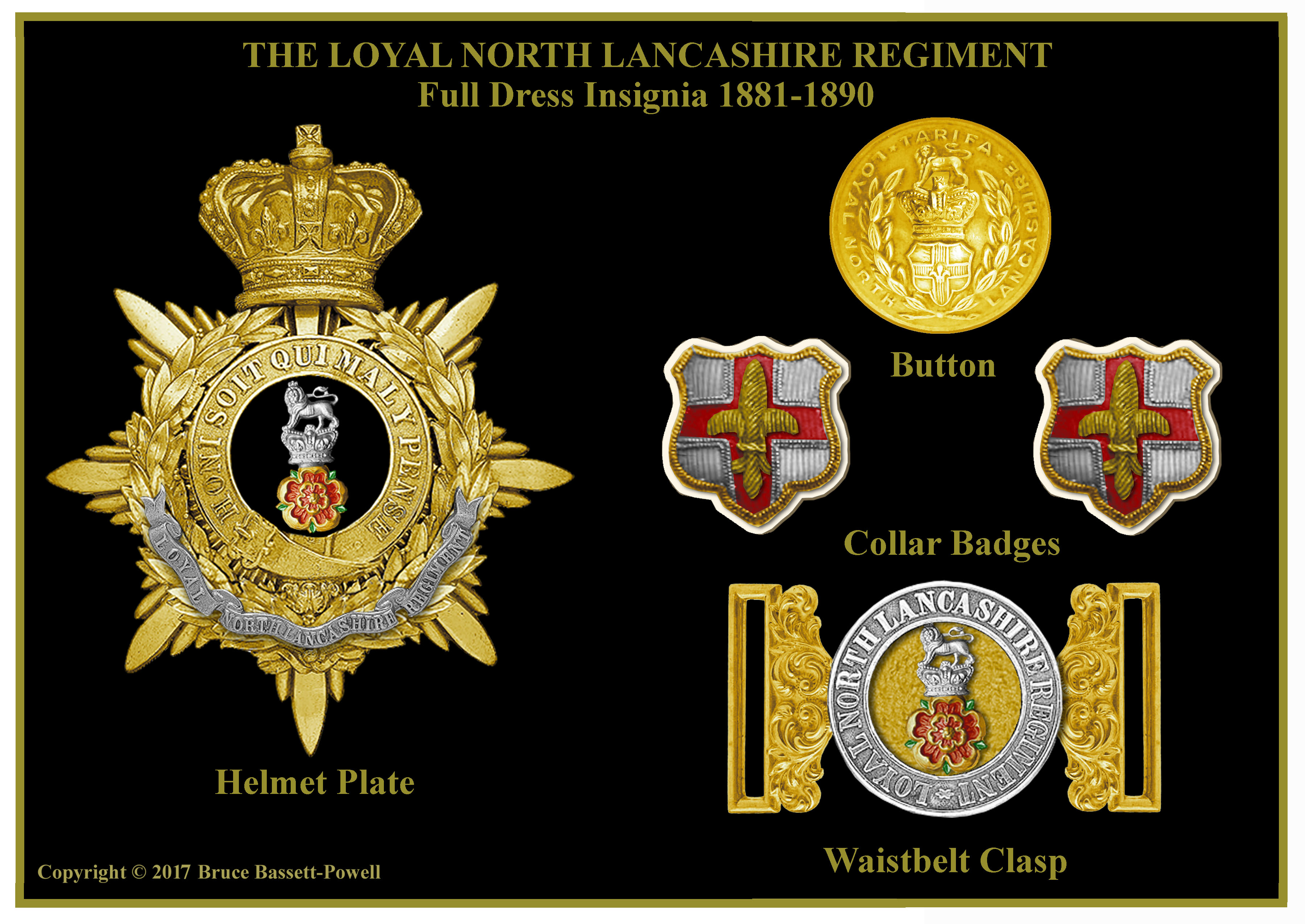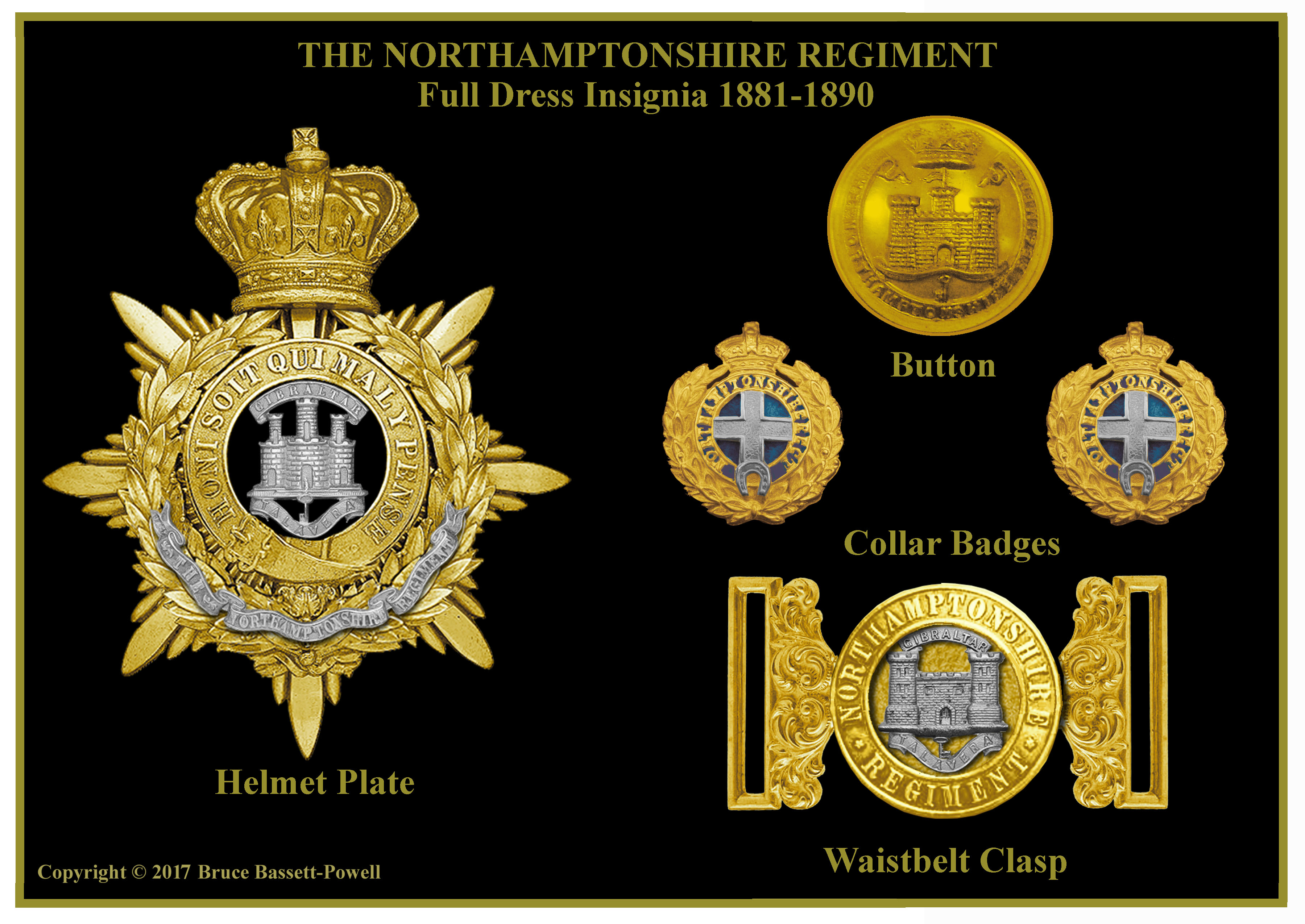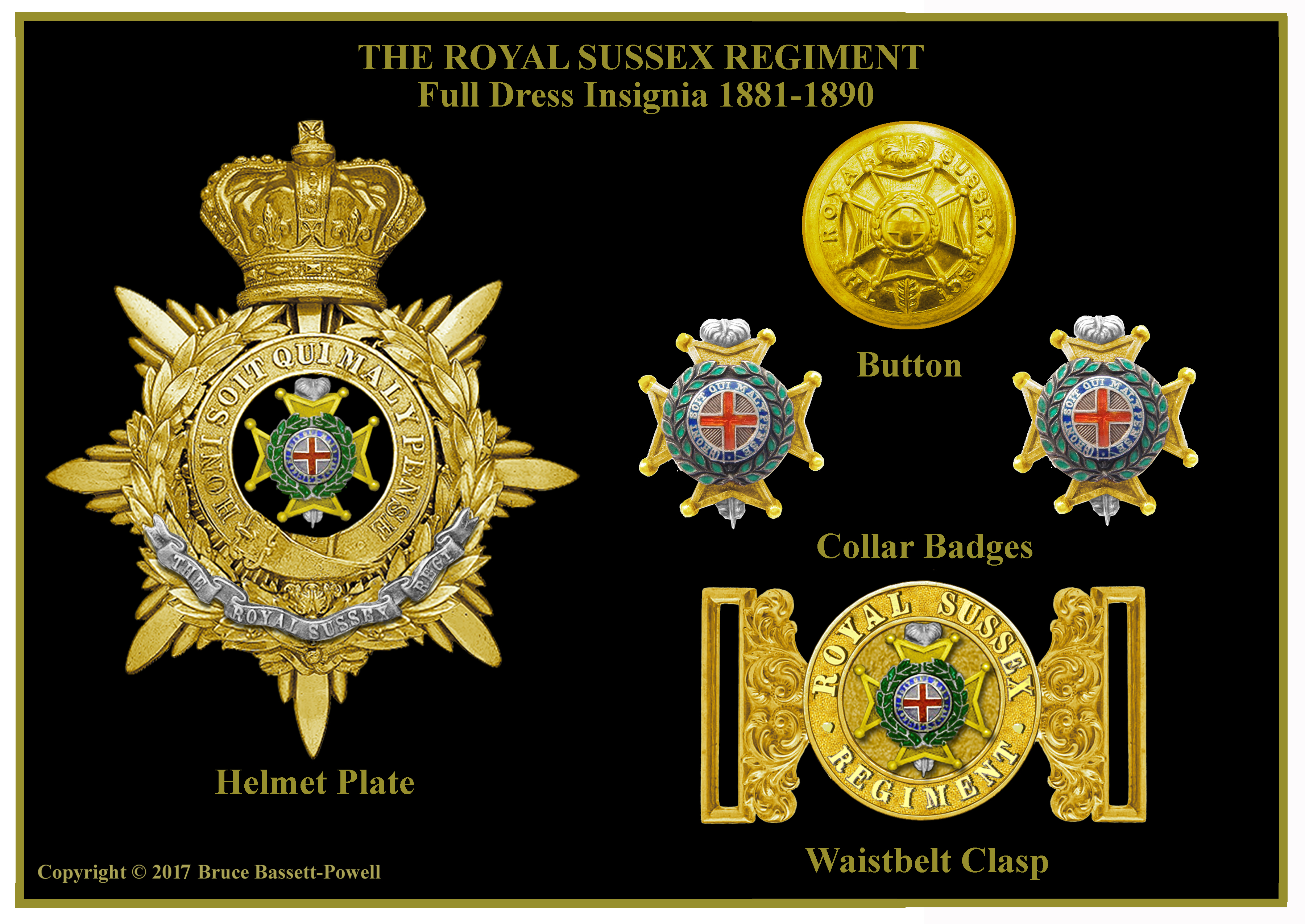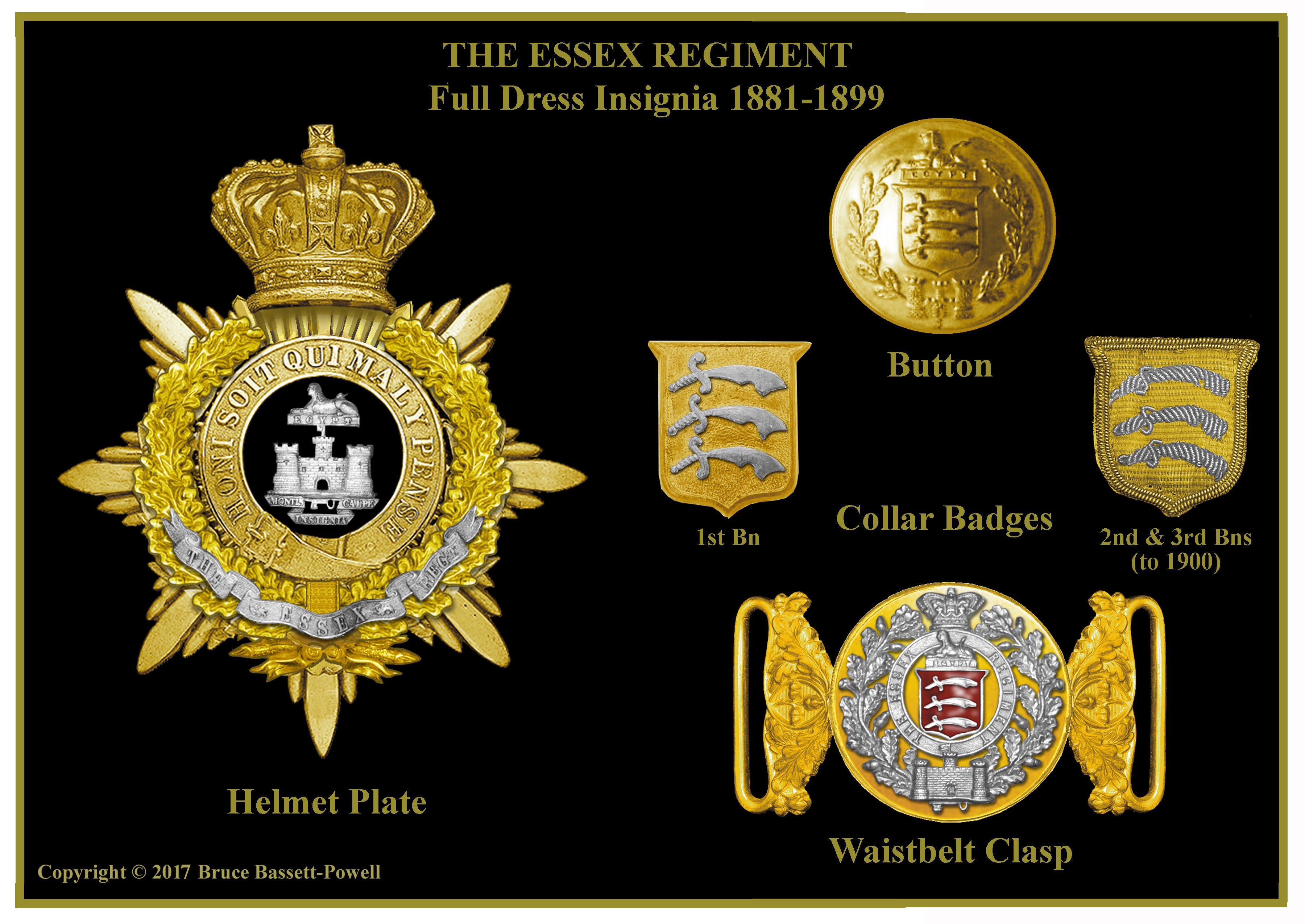Page 4
The Royal Sussex Regiment Formerly the 35th and 107th of Foot. A Plume, which commemorates the service of the 35th at the battle of Quebec, when the regiment were said to have taken white plumes from defeated Royal Roussillon Grenadiers. The Maltese Cross, said to commemorate the capture of Malta in 1800. The Star of the Order of the Garter, was the old badge of the Royal Sussex Light Infantry Militia.
The Hampshire Regiment Formerly the 37th and 67th Foot. The Royal Tiger and honour ‘India’, conferred on the 67th to commemorate their service in that country. The Hampshire Rose, adopted in 1881 had been the old badge of the Hampshire Militia.
The Hampshire Regiment Formerly the 37th and 67th Foot. The Royal Tiger and honour ‘India’, conferred on the 67th to commemorate their service in that country. The Hampshire Rose, adopted in 1881 had been the old badge of the Hampshire Militia.
The Hampshire Regiment Formerly the 37th and 67th Foot. The Royal Tiger and honour ‘India’, conferred on the 67th to commemorate their service in that country. The Hampshire Rose, adopted in 1881 had been the old badge of the Hampshire Militia.
The South Staffordshire Regiment Formerly the 38th and 80th Foot. The Sphinx superscribed ‘Egypt’, commemorates the services of the 80th in Egypt, 1801. The Stafford Knot, an old badge of the 38th and 80th. The Round Tower of Windsor Castle, an old badge of the King’s Own Staffordshire Militia and worn on the officers waist belt clasp. Some other honours are not worn on insignia.
The Dorset Regiment Formerly the 39th and 54th Foot. The castle of Gibraltar with key and motto Montis Insignia Calpe commemorate the part played by the regiment during the siege of 1779-1783. Also the Sphinx superscribed ‘Marabout’, which commemorates the services of the 54th in Egypt, 1801. Additionally the Motto: Primus in Indis, commemorates the fact that the 39th were the first regiment of the line to serve in India. The green enamel ground to the badge is in memory of the green facings of the 39th.
The South Lancashire Regiment Formerly the 40th and 82nd of Foot. The Prince of Wales’s Coronet, Plume and motto, a badge of the 82nd since 1793, as the regimental Colonel was attached to the Prince’s household at the time. Also the Sphinx superscribed ‘Egypt’, commemorates the services of the 40th regiment’s flank companies in Egypt, 1801.
The Welsh Regiment Formerly the 41st and 69th Foot. The Prince of Wales’s Coronet, Plume and motto, a badge of the 41st since 1831. The Dragon of Wales, adopted in 1881 had previously been a badge of the Royal Glamorgan Militia. Also a Naval Crown inscribed with the date of the battle of St Vincent, 12th April 1782, in which the 41st took part. Additionally the Motto: Gwell Angau na Chywilydd, whose origin is not clear but which is thought to have probably been selected because it was the motto of a landed family in Monmouthshire, which county was the home of the regimental Colonel who sought and obtained the Welsh title for the regiment.
MORE PLATES COMING NEXT WEEK
The Black Watch Formerly the 42nd and 73rd Foot. The Royal Cypher within the Garter appeared from 1868. The Sphinx superscribed ‘Egypt’, commemorates the services of the 42nd in Egypt, 1801. The Thistle and Crown, an old badge of the regiment and The Badge and Motto of the Order of the Thistle (St Andrew). Additionally the Royal Cypher within the collar of St Andrew and the crown over it with Motto: Nemo me impune lacessit. Also the Arms of Perth, the former collar badge of the 73rd.
The Oxfordshire Light Infantry Formerly the 43rd and 52nd Foot. The Bugle Horn, which was the distinguishing badge of both the 43rd and 52nd since 1803. The horn is suspended from strings rather than ribbons, as in the earliest forms. The regiment also had an unusual collar badge comprising a regimental button and two inches of gilded gimp cord.
The Essex Regiment Formerly the 44th and 56th Foot. The castle of Gibraltar with key and motto Montis Insignia Calpe commemorate the part played by the 56th during the siege of 1779-1783. The Sphinx superscribed ‘Egypt’, conferred on the 44th for service in Egypt, 1801. Additionally the Arms of the County of Essex, a badge of the 56th prior to 1881. An Oak Wreath, adopted in 1881 and displayed on the officers helmet plate instead of the more usual one of laurel. Additional honours, such as a Napoleonic Eagle, were not worn on insignia until much later.
The Sherwood Foresters (Derbyshire Regiment) Formerly the 45th and 95th Foot. A Maltese Cross, which regimental folklore declares relates to when the 95th were formed in 1823 there were still a number of officers from the old 95th Rifles but there is no evidence to support that. Also a White Hart lodged within park gates on an azure field, which was the old badge of the Derby Militia.
The Loyal (North Lancashire) Regiment Formerly the 47th and 81st Foot. The Royal Crest, which was also the Duchy of Lancaster, had been worn by the 47th on their buttons since before 1781. The Red Rose of Lancaster, also an old badge of the 47th. The Arms of the City of Lincoln, which commemorates that the 81st were raised in and at the expense of the city of Lincoln, as the Loyal Lincoln Volunteers and, almost exclusively, manned from the Lincoln Militia, whose badge it had also been.
The Northamptonshire Regiment Formerly the 48th and 58th Foot. The castle of Gibraltar with key and motto Montis Insignia Calpe awarded to the 58th for their part in the defence of the Rock, 1779-1783. The Sphinx superscribed ‘Egypt’, conferred on the 58th in 1802. Also a Red Cross of St George and a Horseshoe, the old badges of the Northamptonshire and Rutland Militia. The horseshoe commemorates the replacement of a shoe lost by Queen Elizabeth I when she was riding through Rutland.
REVISED
APRIL 21ST



